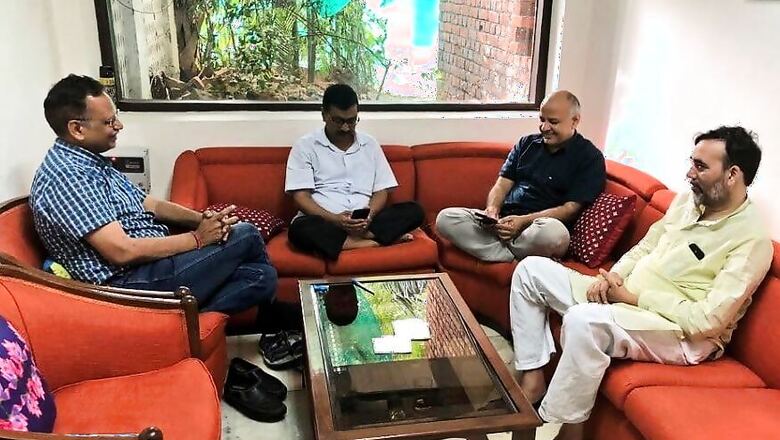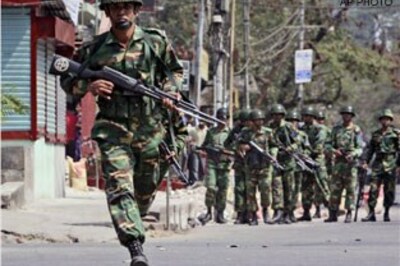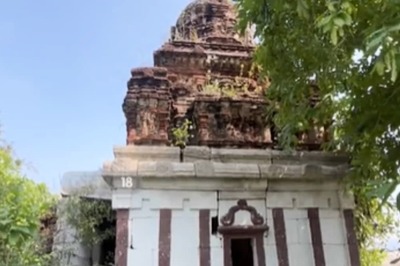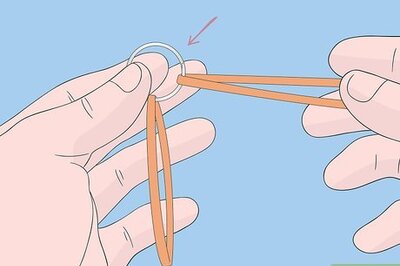
views
New Delhi: In 2013, as Sheila Dikshit’s 15-year-long tenure as Chief Minister of Delhi inched to closure, several of her close confidantes in the bureaucracy took voluntary transfer out of the city. Around the same time Manohar Parrikar had come to power in Goa and was forming his team. Since Arunachal Pradesh, Goa, Mizoram and Union Territories have a common pool of all India service officers to draw from, several of these officers got transferred to Goa.
One morning a newspaper headline screamed, “Sheila’s confidants now part of Parrikar’s team." This sums up the nature of bureaucracy in this country – apolitical.
The political leadership should have the wherewithal to make the bureaucracy work, which owns its final accountability to the blue book drafted by a gentleman called Dr Bhimrao Ambedkar, laws passed by the Parliament and rules of the business drawn thereafter, and not the whims and fancies of elected body of law makers which are sought to be camouflaged as “desire of the people".
The permanent executive, as the bureaucracy is defined in the lexicon of public administration, is expected to keep checks and balances on the elected representatives and vice-versa.
This arrangement has friction inherent in it. In physics, which Delhi Chief Minister Arvind Kejriwal must have studied at IIT, it’s said, “Friction provides required energy. Good part of friction is it help us move about without falling all the time."
If Kejriwal and his ministers feel that the city’s bureaucracy failed to abide by their legitimate orders, they could have moved the court and sought a direction. Instead they have decided to sit on dharna at the Raj Niwas. This move certainly is more than an attempt at making the bureaucracy work; it’s actually directed at the resuscitating fast weakening political sinews of the Aam Aadmi Party (AAP).
When Kejriwal vied for Assembly elections in Delhi in 2013 and again 2015, he could not have been unaware of the governmental structure of the National Capital Territory of Delhi, having run his NGO in Delhi for over two decades and at times in partnership with the Delhi government. Thus, he should have known about the checks and balances which he would have to encounter to govern the city.
It’s another matter that he said that his belief was that the power should rest with him and not the Lieutenant Governor, as ordained under the National Capital Territory Act 1993.
He went to the court, and then in August 2016, the Delhi High Court ruled that the Lieutenant Governor was the administrative head of Delhi and declared that the decisions taken by the Delhi government without consulting the LG were illegal.
Having been shown his place by the court, Kejriwal has no other option but to get into histrionics to keep himself politically relevant.
After-all, Congress president Rahul Gandhi refused to extend an invitation to the AAP leaders for the iftar which he hosted on Wednesday, keeping them out of the frame of the opposition unity.
Coming to the question of statehood for the national capital, without the grant of which Kejriwal’s deputy Manish Sisodia would not break his indefinite fast, is financially untenable for the city.
Elected city government may complain about not being allowed a free run, as in the case of other states but it should not be forgotten that the pampered and prime status of Delhi is all thanks to the Centre’s intervention.
Delhi’s annual state budget today is almost Rs 50,000 crore. The sum is much bigger than the budget of several full-fledged state governments.
In addition, the budget does not include the expenditure on Delhi Police, which is part of the Union Budget. Even the responsibility for pension liabilities of former Delhi government employees lies with the Centre.
Moreover, the Delhi government’s budget only includes part funding of the three municipal corporations. It contributes no funds to the New Delhi Municipal Council (NDMC) and Delhi Development Authority (DDA).
These civic bodies raise their own revenues and the shortfall is met by the Central government. Given the situation, if Centre was to give full statehood to the national capital, along with control over the NDMC area, Delhi’s Budget outlay would jump to at least Rs 80,000 crore. Where will the additional sum come from?
However, it should also not be forgotten that in the past whenever Delhi lived within its means, it has enjoyed unlimited fiscal autonomy, like any other state. This has been possible by positive cash balance. But, whenever the state government tries to live beyond the means, it has to go to the centre as a supplicant as it has very meagre means of its own revenue.
In such situations, all financial decisions, which in turn also affects all administrative decisions, becomes subject to the central nod. Thus, the delivery of rations at doorsteps would need funds, which have to be provided by the Centre; so would putting security guards on buses, and CCTV cameras in every nook and cranny.
The promises which the Aam Aadmi Party made in the run-up to the 2015 assembly elections all need a huge injection of capital to deliver on the assurances. A ‘subsidy’ propelled poll campaign has is now proving to be a political albatross around the neck of the Kejriwal government.
The AAP government in Delhi has so far found it difficult to wriggle itself out of the situation created by itself. With dates of polls drawing close, it’s trying various means to remain relevant, including seeking an alliance with the Congress. Since the alliance has failed to materialise so far, it has to seek other means to remain the frame, for which ‘dharna’ is their time-tested tool.
(The writer is a senior journalist. Views are personal)



















Comments
0 comment